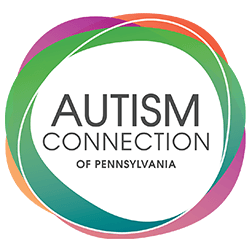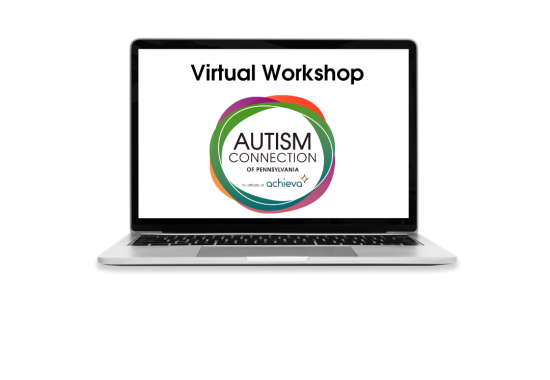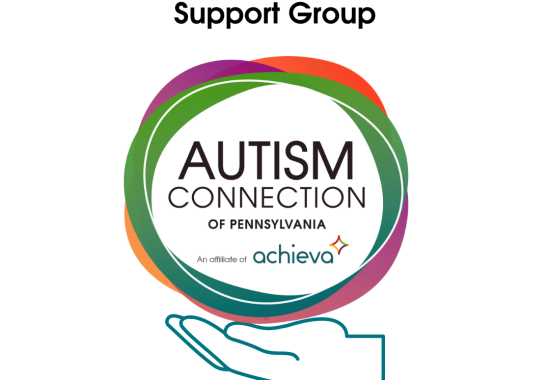Tag: Autism Diagnosis
Introduction to Autism Virtual Workshop
Understanding The Connection Between Autism Spectrum Disorder and Cerebral Palsy
April is a time when we come together to recognize the diverse experiences of people living with autism spectrum disorder (ASD) and their families, and we encourage the momentum to continue throughout the year. Autism is a complex neurodevelopmental condition that affects how a person communicates, interacts with others, and experiences the world around them. As we delve into the intricacies of autism, it’s essential to understand its relationship with other conditions, such as cerebral palsy.
The Intersection of Autism and Cerebral Palsy
Cerebral palsy (CP) is a group of neurological disorders that affect movement, posture, and muscle coordination. While CP primarily impacts motor function, it can also co-occur with other developmental conditions, including autism. Research suggests that approximately 6% to 15% of individuals with CP also have a diagnosis of autism, highlighting the overlapping nature of these conditions.
The co-occurrence of autism and cerebral palsy presents unique challenges for each person and their families. Understanding the relationship between these conditions is crucial for providing comprehensive care and support. While the exact mechanisms underlying their co-occurrence are not fully understood, a couple factors may contribute to their association:
Common Risk Factors – Both autism and cerebral palsy have shared risk factors, including genetic predisposition, prenatal complications, and environmental influences.
Neurological Differences – Research suggests that disruptions in brain development may contribute to the development of both conditions. Structural and functional abnormalities in the brain can manifest as diverse symptoms associated with autism and cerebral palsy.
Navigating Dual Diagnoses
Receiving dual diagnoses of autism and cerebral palsy can be overwhelming for individuals and their families. It’s essential to access comprehensive support services and resources to address the unique needs associated with each condition. Here are some steps to navigate this journey:
- Seek Multidisciplinary Care — Collaborate with a team of healthcare professionals, including pediatricians, neurologists, developmental specialists, and therapists, to develop a personalized treatment plan tailored to your child’s needs.
- Access Early Intervention Services — Early intervention is critical for optimizing outcomes for children with autism and cerebral palsy. Explore early intervention programs that offer therapeutic interventions, educational support, and family-centered services.
- Connect with Support Networks — Joining support groups and connecting with other families facing similar challenges can provide invaluable emotional support, practical advice, and shared experiences. Organizations like Autism Connection of PA offer resources and community networks.
Autism Connection of Pennsylvania thanks Jennifer LaRocco, Editor & Coordinator at Cerebral Palsy Guidance, for sharing her expertise through this insightful guest blog post. Jennifer’s contribution sheds light on the intricate relationship between autism spectrum disorder and cerebral palsy. As we commemorate April’s focus on autism, let’s keep the momentum going throughout the year. Thank you, Jennifer, for your dedication to raising awareness and fostering understanding in our community.
Please visit Jennifer’s page on the Cerebral Palsy Guidance website to learn more.
Late Diagnosis Autism Support Group Meeting
Virtual support group meeting for adults diagnosed on the autism spectrum later in life. This meeting is open to people who believe they are autistic, and don’t know where to turn for help.
Late Diagnosis Autism Support Group Meeting
Virtual support group meeting for adults diagnosed on the autism spectrum later in life. This meeting is open to people who believe they are autistic, and don’t know where to turn for help.
Introduction to Autism
Getting any new diagnosis comes with the need to understand it. Learn the basics about autism, and get some take-home tips, from people who understand and have worked in this field for 20+ years.
We will explain the details about autism and how brain differences help shape personality, likes, dislikes, fears, eating, sleeping, the senses, and communication. Please come and ask your questions, meet others with similar concerns and learn what to do at home and in the community!
This is a free workshop, but registration is required.
Let the Children Lead Us and Teach Us
One day a week I take myself to the office, the rest of the week I work remotely. The fluorescent lights in the office are not kind, and it takes me an hour to de-escalate myself once I get home. Sensory overload is real and it is hard. I wasn’t always aware of my sensory needs, and I still struggle with coping, but my son taught me how to identify obstacles in the environment. They were always there, and sensory overload affected me, but I am a product of the 80’s and 90’s growing up, and we certainly didn’t talk about sensory needs. You just dealt with it, or didn’t, but regardless you did it quietly.
Fast forward to having a child who was diagnosed with autism.
As a parent of a child on the spectrum, I had a large learning curve and I needed to maneuver it quickly. One day he didn’t have autism, and the next he did. Now I know, autism was always a part of him, this is what I mean by learning curve. In the beginning, I was circumventing the curve by doing everything others told me I needed to do to “cure the autism”. The focus was on changing him, not on creating a space where he could thrive. If he wasn’t in therapy or working on targeted skills, we were wasting precious time to “fix” him. False. False. False.
Let me stop here and replace cure with cope and also say that speech, occupational, physical therapy, and skill building can happen in all the places all time. Children need space to be children and their adults need space to just be supportive adults. And while we’re replacing words in our vocabulary, let’s replace compliance with cooperation. But we can talk more about compliance vs cooperation in a future blog.
We have so much to learn from people, especially children. Once I began focusing on coping, rather than fixing, everything changed. When I learned to listen to what my son was communicating but wasn’t verbally saying, everything changed. My son changed my entire view moving forward and made me realize I needed to reflect inward. The space I was trying to create for him to thrive, I learned, I also wanted. I didn’t want to just “get through it” anymore.
Actively listening to my son smashed my rose colored glasses and showed me the beautiful world of diversity and inclusion. I learned how to identify and advocate for what I needed to be comfortable. I learned that asking questions and genuinely wanting to get to know about people and what is important to and for them, helps us all grow and create safe spaces. I learned that as I’ve shared how I feel or what I’ve experienced, many others say “me too!”, which creates a welcoming environment to share what is in their hearts and in their minds. I learned to meet people where they are. Even though I’m much older than my son, it’s been a life changing experience to learn together that neither of us needed fixing.
This is a reminder to let the children lead us and teach us.
E.R. Heffel




